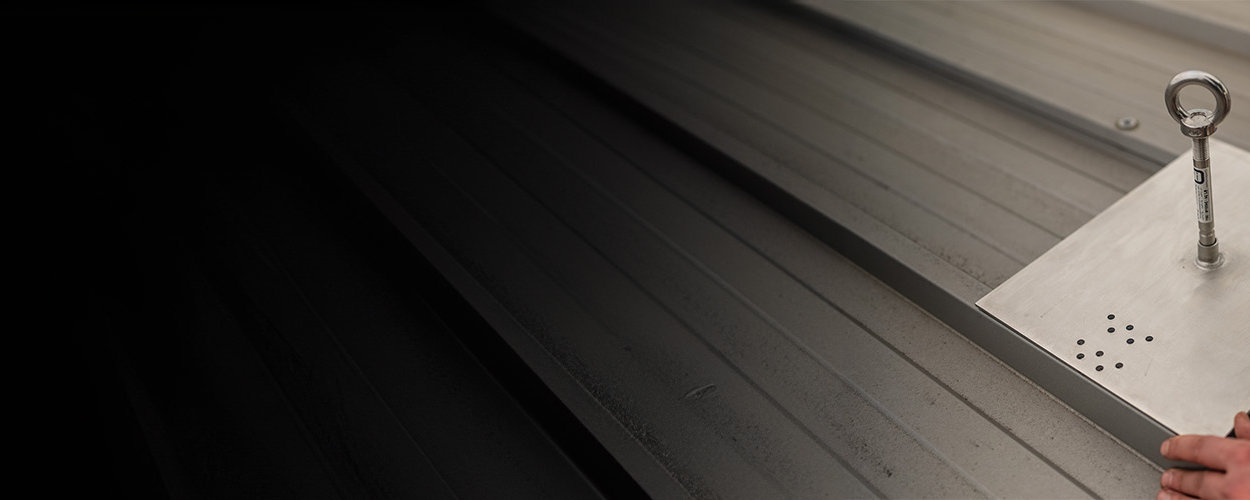- What is that?
Fall protection is a device or practice designed to prevent people working in areas where there is a risk of falling from a height from falling or coming to harm. Typical occupational groups that require such fall protection are roofers, firefighters, construction industry employees, plumbers and others.
Fall protection systems are used particularly in work safety. They are similar in function to lifelines, which are used when climbing, for example, to prevent or secure a fall.
Fall protection from what height?
DGUV regulation 38 §12 specifies the following heights:
- From a fall height of 1 metre at: exposed flights of stairs and landings, wall openings and at operating stands for machines and their access points (from 0 m when working above water),
- From 3m fall height at workplaces and traffic routes on roofs
- From a fall height of 2 metres for all other workplaces and
Fall protection on flat roofs
The most common fall protection systems for use on a flat roof are cable systems and anchor points, each of which has its own advantages and disadvantages. With anchor points, the entire surface of the flat roof can be covered and secured easily and without great effort. However, mobility is restricted. With a cable system, on the other hand, horizontal movement is also possible and the radius of movement shifts along the cable. This maximises the secured but accessible roof area for the individual users. However, anchor points are more suitable for larger groups, as everyone can use their own anchor point and work independently of each other.
Another safety system is the use of guardrails. This measure, which is part of collective protection, protects a group of people from approaching the edge of a fall. Depending on the weather conditions, these guardrail systems can also be implemented as mobile or load-bearing variants.
The measures that can be considered for securing the flat roof can therefore vary depending on the intended use and individual circumstances. Generalised recommendations have no place in the planning of safety systems! Of course, the applicable regulations (e.g. to be found in the DGUV) must always be observed.
Retrofitting fall protection on a flat roof
The biggest factor when retrofitting fall protection on a flat roof is the condition of the flat roof in question. If the condition of the building or the roof to be secured is new or in good condition, retrofitting is usually possible without any problems. If the roof is in a rather poor condition, retrofitting is much more complicated. However, it is always possible to retrofit fall protection systems to flat roofs (albeit at great expense). Our experts will be happy to advise you if you are unsure!
Would you like to secure your roof? Get in touch with us now and we will be happy to find the right solution for your flat roof!
